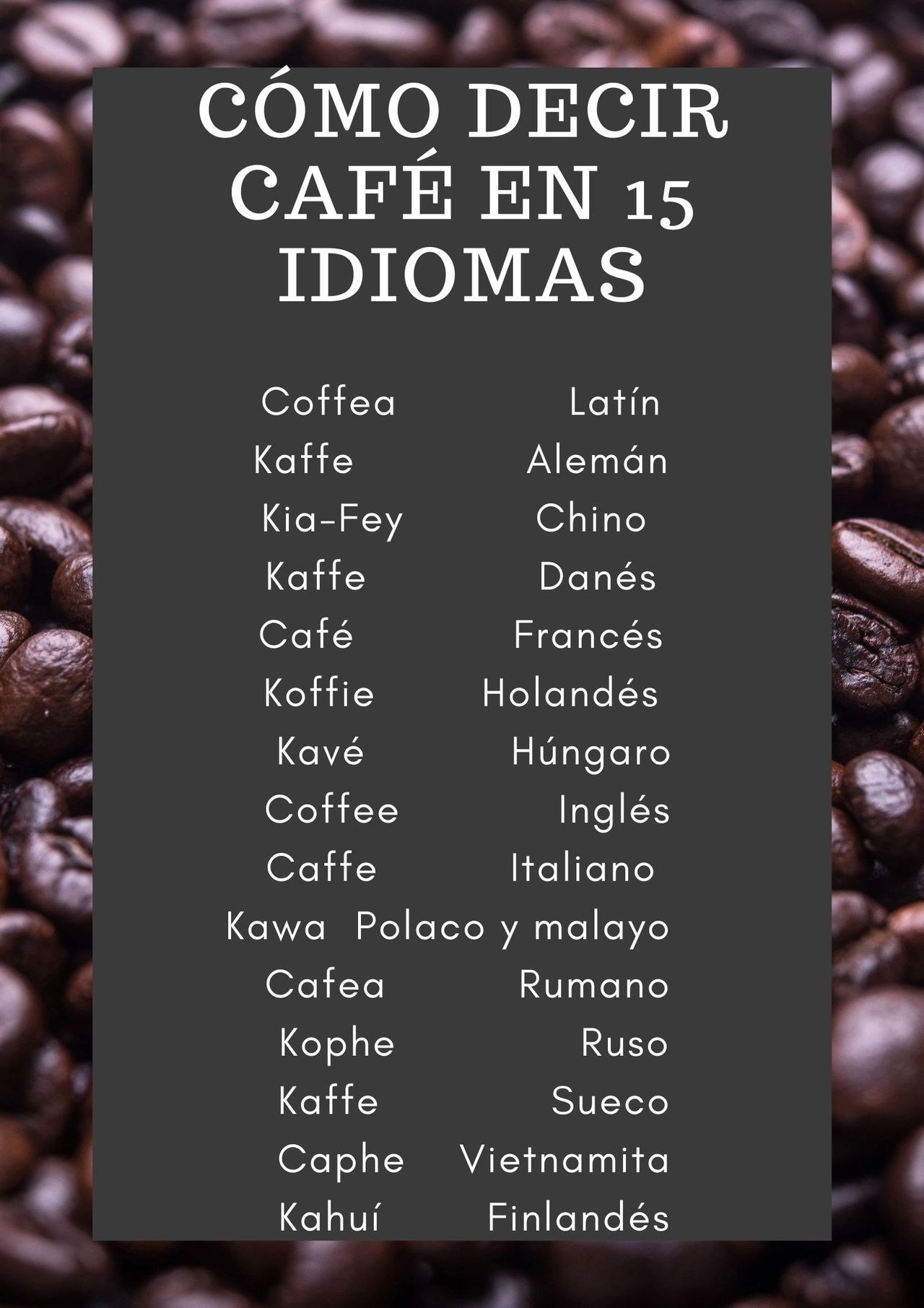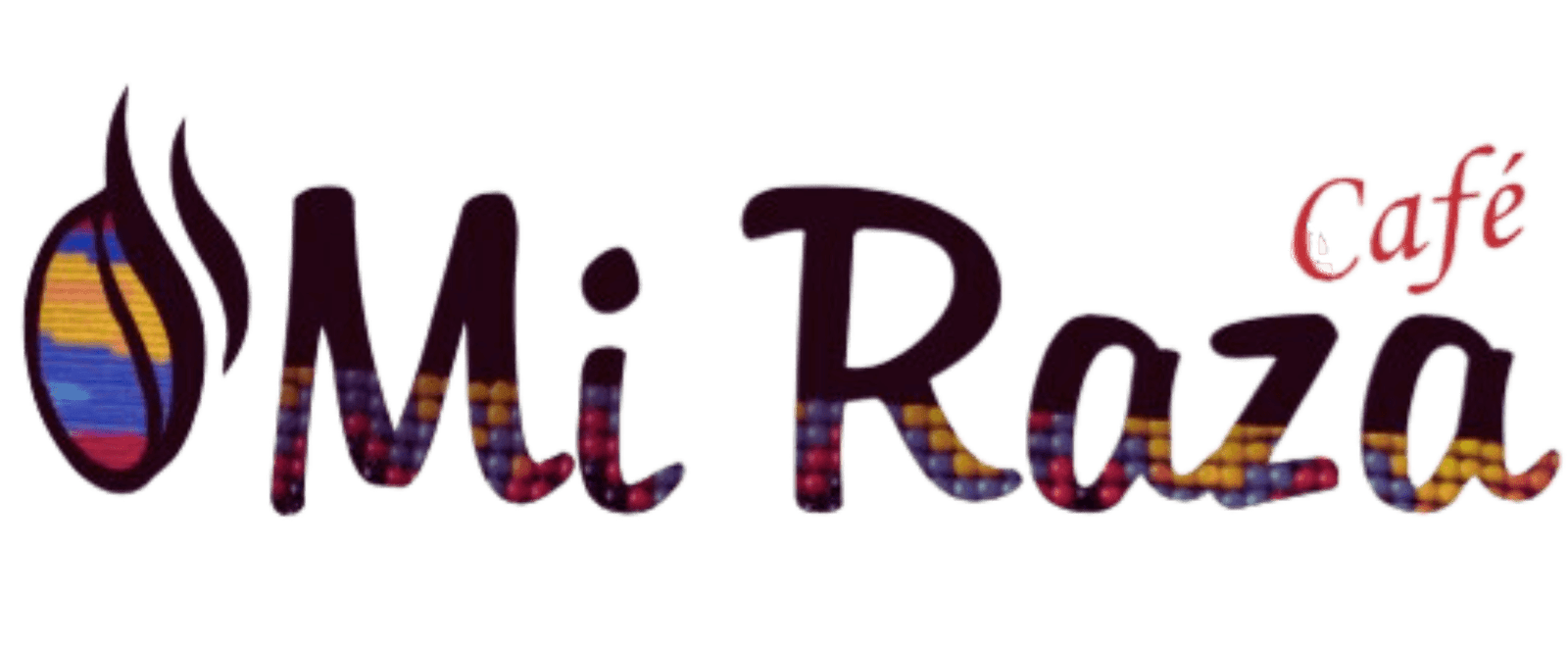From the universe of coffee, we made the following report with the compilation of information that, in our opinion, can be useful for coffee lovers who want to know a little more and enter into context about this extraordinary drink.
1. How to say coffee in different languages.

2. Ways of preparing and drinking coffee in Colombia and some parts of the world.

Classic preparations with coffee.
– Coffee with milk.
– Pintado o perico
– Espresso
Espresso derivatives: Cappuccino, Ristretto, Roman Espresso, Lungo, Doppio, Al
vetro, Caffé con panna, unicorm, Macchiato, Monachella, Vienés or Einspenner,
Espresso milkshake, Frapuccino, French coffee, Brauner, Monford coffee, Marocchino,
Bicerín Domino, Black Africa.
– Hot Coffees
Jacket Coffee, Quemado de panela, Turkish coffee, Vietnamese coffee, Royal coffee, Irish coffee, wine coffee, Brülot coffee, Gror, Finnish coffee-Kahvi, Eigelg coffee, Hungarian coffee.
– Cold Coffees
Coffee ice cubes, coffee slush, coffee milkshake, butterfly coffee, coconut coffee, iced Turkish coffee.
– Cold coffees with liquor
Black russian, Bourbon coffee cobbler, Colombia tropical.
3. Best countries and places to drink coffee in the world.
- Colombia: Existen muchas cafeterías emblemáticas y fincas cafeteras que hacen su propio Café de origen catalogado como el mejor del mundo.
- Brasil. Rio de Janeiro: Café Colombo. Es un referente turístico fundado en 1894
- Argentina: Café Tortoni. Fundado en 1858 es el lugar para tomar café más emblemático de Buenos Aires.
- Hungría: Budapest: Café New York. Fundado en 1894. Es majestuoso y catalogado como una de las mejores cafeterías de Europa.
- Italia: Venecia. Café Florian. Es considerado por muchos como uno de los cafés más antiguos (1720) y con más historia de Italia. Por sus salones pasaron personalidades como Vivaldi y Rousseau.
- Portugal: Oporto. Café Magestic. Permanece en la tradición de Café tertulia. Es considerado el sexto café más hermoso del mundo.
- Francia: París. Café de la Paix. Inaugurado en 1862 posee un ambiente y proximidad a la ópera. En 1975 fué declarado cómo monumento histórico por el gobierno Francés.
- Austria: Viena. Café Central. Fundado en 1860. Es una gran atracción turística.
4. Coffee producing countries and those with the highest consumption in the world.
a. Largest coffee producing countries 2021.
Below we share the list with the 11 main coffee producers in the world according to the international coffee organization.

Fuente: revistaforumcafe.com
b. Countries with the highest coffee consumption in the world.
Approximately between 1,600 and 2 billion cups are drunk daily in the world. 65% are taken in the morning.
Brazil approximately with 6 Kg person year.

5. ¿How to taste the qualities of a Coffee?

- BODY: It is perceived when looking at it and we feel it in the mouth when we taste it; a full, full, thin or light body. It may be “watery” or “very loaded.” The body is affected by the degree of roasting and the way or method of preparing it.
- FLAVOR: In coffee, the flavor is the result of a balance between the intensity and the degree to which its aroma, its body, and its acidity are presented.
- ACIDITY: It is one of the main qualities sought in coffee and a desirable and pleasant characteristic, one of the most appreciated in Colombian coffee. Its intensity is modified by the degree of torrefaction. Experts distinguish three kinds of acidity: natural, desirable and acidic.
- AROMA: The fragrant and pleasant smell is the first thing you perceive in coffee when you smell it, when grinding it or after pouring hot water. Its volatile substances produce its aroma: floral, fruity, sweet or pronounced.
- FRAGRANCE: Soft and delicious smell, perfume, effluvium.
- BITTER: It is to the taste of each palate and in coffee it is desirable in a moderate degree, it is affected by the degree of roasting and the way or method of preparing it.
- SWEET: It is a soft and pleasant sensation on the palate. It is one of the main characteristics of Arab coffees.
- FRESH: It is identified when its aroma stands out in all its splendor.
- STRONG: With good body, strong flavor and characteristic smell. It varies with the roasting or the type of preparation.
- FRANCO: It is a coffee with a pleasant aroma. Tasty.
- BALANCED: A harmony is perceived in its flavor.
- FRUIT: Coffee can have exquisite fruity aromas or it can have a ferment.
- OVERALL IMPRESSION: It is the balance of all the above qualities together.
6. Coffee defects.
- OILY: Fried oil flavor or greasy flavor.
- WOODY: Remember the smell of dry wood, it can be caused by defective beans or it can be caused during roasting.
- ACRE: Sensation that is both bitter and astringent or rough, scratchy and unpleasant.
-
ASTRINGENT: It is assimilated to undesirable acidity. Leaves a dry sensation on the tongue or mouth.
-
SOUR: “Fruity” or “winy” flavor.
- SLUD: An infusion containing a quantity of suspended particles and an unpleasant body.
- OFF: A coffee with “lack of character”, “tasteless”, a weak cup.
- WATERED: Refers to the lack of body or consistency of a coffee. It is a “light” drink that has been prepared with too much water.
-
OLD: It has lost its aroma and acquires an unpleasant characteristic. It occurs due to the passage of time or poor storage.
-
GREEN: With a sour taste. Characteristic of coffee prepared with immature beans.
-
SACK: It occurs with coffees stored for a long time in bags, it has a strange flavor that can occur in coffee infusions prepared with little coffee and poorly roasted.
-
CHEMICALS: It can originate during cultivation, processing or storage.
-
SMOKE: Aroma and flavor of burning wood.
-
EARTHY: There is a smell of recently removed earth, it seems dirty, it has a marked and unpleasant flavor.
-
WINEY: Coffee becomes sour.
-
HARD: Gives a mixed sensation: bitter and acidic. They do not have roundness of the body. It is a poorly balanced coffee and on the verge of becoming acrid.
-
AGED: It is a coffee that has lost its aroma and flavor.
-
NEUTRAL: Does not present predominant characteristics. It is a coffee that is not aromatic, it is weak.
-
STINKER: Vinegar (Stinker). Coffee with a fermented smell and flavor. The undrinkable drink.
7. The good and bad of drinking coffee.

-
The good thing about drinking coffee: Benefits.
- Less probability of acquiring mental disorders.
- Improves physical and sports performance.
- It works as a laxative and prevents constipation.
- It can combat depression.
- Fights premature aging.
- Decreases the risk of heart disease.
- Reduces the possibility of acquiring type 2 diabetes.
- Fights asthma attacks and other allergies.
- Reduces headache.
- Delays the appearance of algaimer.
- Prevents cirrhosis.
- Fight cellulite.
- It can be used as a skin exfoliant.
-
The bad thing about drinking too much coffee.
- Imitation ulcers in the stomach and intestine
- Anxiety and euphoria.
- It can alter the hormonal levels of pregnant women.
Sources:
*Libro Cafés de Colombia. Liliana Villegas.
*https://www.revistaforumcafe.com/2021-cafetero
*https://es.history-hub.com/principales-paises-productores-de-cafe
*juanasempere.com

